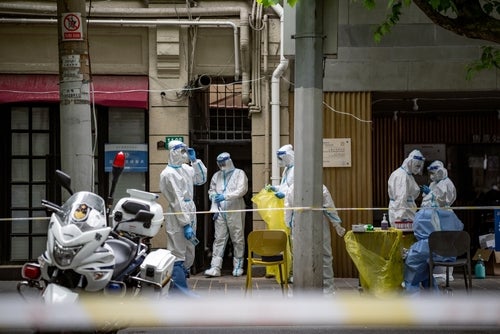
The world’s second-largest economy and largest apparel exporter, China, has seen widespread lockdowns that have closed down businesses, including apparel manufacturing hubs, under its zero-Covid policy.
Apparel experts tell Just Style exclusively the global apparel industry is already deeply concerned about the business disruptions caused by the policy. Dr Sheng Lu, associate professor of fashion and apparel studies at the University of Delaware explains: “Many Western fashion brands operating in China reported unprecedented financial losses in the first half of 2022 due to China’s Covid policy.”
In fact, he says some fashion brands suffered a sales drop exceeding 50% as their physical stores had to close, and e-commerce presence was limited in China. He also points out that fashion companies expect China’s Covid-related restrictions to extend into the third quarter or even longer.
He continues: “For fashion executives, there is an even more significant question mark regarding the future: Will China’s leadership continue to adopt one of the world’s most business-friendly policies, or a new era has already begun?”
On the other hand, Lu explains: “China is a critical textile supplier for many leading apparel exporting countries in Asia. As the zero-Covid policy disrupts China’s textile production, garment factories in many Asian countries struggled with a shortage of raw materials like yarns and fabrics.

US Tariffs are shifting - will you react or anticipate?
Don’t let policy changes catch you off guard. Stay proactive with real-time data and expert analysis.
By GlobalDataBob Antoshak, partner at Gherzi Textil Organization believes China’s zero-Covid policy has only intensified the growing diversification trend of apparel sourcing away from Chinese manufacturers.
He tells Just Style: “In part, this is to do with the strict and at times sudden nature of Covid-related shutdowns which adds an unwanted degree of unpredictability for sourcing companies. When combined with macro-economic factors such as inflation and uneven demand in consuming markets, this makes for a volatile formula.”
He continues: “Moreover, this combination of factors not only has sourcing companies shifting their priorities on where they secure sources of supply, but when such orders are placed. As a consequence, there’s a surge in demand from countries such as Vietnam, Bangladesh, and, increasingly, India for finished apparel.”
Antoshak explains the uncertainty that exists within China has contributed to sourcing strategies closer to consuming markets, as witnessed in a revival of sourcing in the Western Hemisphere and in support of the US retail market.
Earlier this year, Shenzhen, the largest manufacturing hub within Guandong, told all factories that were not involved with essential services to pause production as part of China’s zero-Covid policy.
Brands such as Adidas, Nike and Fast Retailing’s Uniqlo source goods from factories in Shenzhen, however, Nike and Uniqlo did not comment on the closures at the time while Adidas played down concerns with a spokesperson saying “we do not see any significant impacts as currently only two of our more than 100 suppliers in China are affected.”



